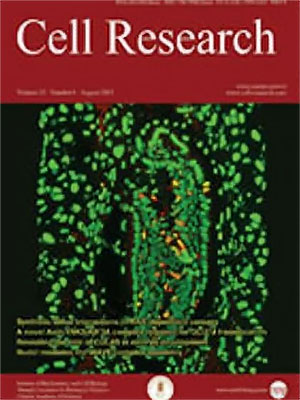Volume 9 Issue 1, March 1999: 11-26
ORIGINAL ARTICLES
A novel gene delivery system targeting cells expressing VEGF receptors*
LI Jun Min1**,Jun Song HAN1,Yi HUANG1,Pei Kun TIAN1 Shu Min QU1,Min YAO1,Hui Qiu JIANG1,Da Fang WAN1, Jing Chu LUO2,Cheng Xiao GU2,Jian Ren GU1***
1 National Laboratory for Oncogenes and Related Genes, Shanghai Cancer Institute, Shanghai 200032, China
2 National Laboratory of Protein Engineering and Plant Genetic Engineering, Peking University, Beijing 100871,China
Correspondence:
Two ligand oligopeptides GV1 and GV2 were designed according to the putative binding region of VEGF to its receptors. GV1, GV2 and endosome releasing oligopeptide HA20 were conjugated with poly-L-lysine or protamine and the resulting conjugates could interact with DNA in a noncovalent bond to form a complex. Using pSV2-b-galactosidase as a reporter gene, it has been demonstrated that exogenous gene was transferred into bovine aortic arch-derived endothelial cells (ABAE) and human malignant melanoma cell lines (A375) in vitro. In vivo experiments, exogenous gene was transferred into tumor vascular endothelial cells and tumor cells of subcutaneously transplanted human colon cancer LOVO, human malignant melanoma A375 and humanhepatoma graft in nude mice. This system could also target gene to intrahepatically transplanted human hepatoma injected via portal vein in nude mice. These results are correlated with the relevant receptors (flt-1, flk-1/KDR) expression on the targeted cells and tissues.
FULL TEXT | PDF
Browse 2380


